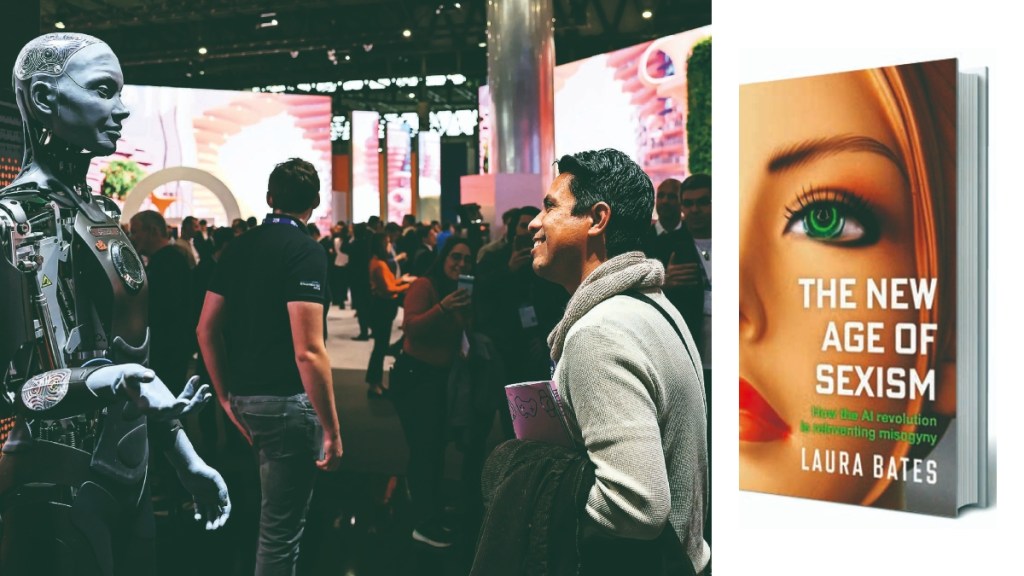By Uttaran Das Gupta
The use of generative artificial intelligence (AI) systems continues to grow exponentially around the world, attracting huge amounts of government and private funding. According to German data website Statista, the AI market size was projected to grow to $244 billion this year and touch $1 trillion by 2031. Last year, California-headquartered AI company Nvidia beat Microsoft and Apple to become the largest company in the world, with a market capitalisation of $3.85 trillion. At the same time, experts continue to grapple with the fallout of AI adoption in our professional and personal lives, with widespread job losses, environmental impact and amplification of biases such as sexism, racism and homophobia.
In mid-2024, the Unesco published a report that showed how large language model (LLM) AI systems such as ChatGPT or Llama2 consistently produced content with gender bias, homophobia and racial stereotyping. Trained on vast amounts of text data, the LLMs reproduce structural biases inherent in such texts. British feminist Laura Bates’s new book makes an intervention in the study of sexism amplified by AI. “Despite the advances that have been made in gender equality, the world that women live in is still very different from the one men inhabit,” writes Bates in the introduction to her book. “Men and women can walk down exactly the same street and have vastly different experiences. The same is true of the online world… women simply have a different experience of technology than men do.”
Providing examples of increasing online assault on women and deep-fake pornography, Bates makes the disquieting claim that we are standing on a precipice where technology is about to change the world in ways we cannot even imagine. But she is not interested only in adding to the cacophony of moral panic; instead, her book is “a call to arms, to take action now, before it’s too late”.
As a first step towards taking action to prevent the worst effects of AI overwhelming our lives, Bates deeply investigates some of the more problematic outcomes of this new technology. In seven, thematically organised chapters, Bates looks at deep-fake pornography, Metaverse harassment, sex robots, cyber brothels, revenge pornography, AI girlfriends and the problems with AI design. The final chapter of the book attempts to provide some solutions to these problems.
Bates uses standard journalistic methods of interviews, archival exploration and analysis of data and official reports. The stories that Bates narrates comprise accounts of victims and survivors of AI-generated abuse, such as Indian journalist Rana Ayyub, whose image was used to create explicit content in 2018. “From the day the video was published, I was not the same person,” Bates quotes from an article Ayyub wrote on the incident. “I used to be very opinionated, now I am very cautious…” From the experience of Ayyub and other such victims and survivors, Bates extrapolates: “Deepfake pornography is a new form of abuse, but its underlying power dynamics are very, very old… It is about putting women in their place. It is all about power and control… It is about subjugating them.”
The writer, however, does not only report from an objective, outsider position. In several cases, she makes herself vulnerable. For instance, in the very first chapter, she describes using a Web-based application and websites to generate deepfake, explicit images of herself. Similarly, in the second chapter, she uses an online avatar to visit a seedy Metaverse night club. “(T)here is something horrifying about seeing those videos of yourself that you just cannot imagine until it actually happens,” she writes, recalling the traumatic experience of online harassment through deepfake pornography after the publication of her 2020 book, Men Who Hate Women. “You feel furious and then terrified and then furious again and then hopeless and defeated,” writes Bates. “You can never get rid of it.” Written from a place of personal experience, Bates’ book is infused with deep empathy.
There is, of course, increasing awareness of the pitfalls of AI. A poll conducted by Amnesty UK earlier this year shows how “staggering levels of online misogyny that plagues social media” were driving young people, especially women, away from these spaces. With digitally native Gen-Z and Gen-Alpha being most vulnerable to such abuse, and older generations still woefully inadequate to even understand it, the worst effects of the online manosphere and incel communities, aggravated by the tsunami of AI-generated content, threatens to overwhelm us. As Bates finds in chapter after chapter, very little is being done at the community, institutional or government levels to address this crisis. The Netflix series Adolescence (2025) gave us only a glimpse of the storm that is brewing.
So what can we do about it? In the final chapter of her book, Bates suggests that no single approach— ‘silver bullet’— will be sufficient to prevent the disaster towards which our society seems to be hurtling. She calls for global coordination, better policies, transparency and a critique of tech billionaires such as Mark Zuckerberg and Elon Musk. Though none of what Bates suggests is new information, she brings it together with clarity of language and argument. Her book is an important contribution to an essential conversation for our times.
Uttaran Das Gupta is a writer and journalist







